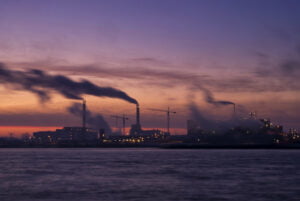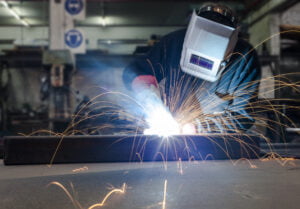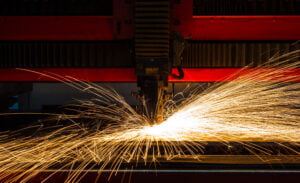Introduction
In 2019, the UK became the first major economy to pass laws to end its contribution to climate change by 2050. The target is for the UK to reach net-zero by 2050. “The UK kick-started the Industrial Revolution, which was responsible for economic growth across the globe but also for increasing emissions,” said Energy and Clean Growth Minister Chris Skidmore, “today we’re leading the world yet again in becoming the first major economy to pass new laws to reduce emissions to net-zero by 2050 while remaining committed to growing the economy – putting clean growth at the heart of our modern industrial strategy.” (source)
Net-zero is a widely used term and is becoming more important than ever to achieve with climate change affecting the world to an increasing degree. Becoming net-zero means removing the same amount of greenhouse gasses as is produced. Once the amount removed is equal to the amount produced, this would be net-zero. An example of how this can be achieved is to plant enough trees to remove greenhouse gasses from the atmosphere, an equal amount to what is produced.
There is evidence to show the planet is getting warmer due to climate change. This is caused by greenhouse gasses in the atmosphere, so named due to the greenhouse effect that they cause. These gasses trap energy from the sun in the planet’s atmosphere, causing it to heat more than is natural. The most common greenhouse gasses are carbon dioxide, water vapour and methane. As our planet’s temperature increases, erratic weather patterns become increasingly common. These include heat waves, floods, storms, loss of polar caps and rising sea levels (source).
Challenges
Achieving net-zero is extremely important, but no small task. Reaching net-zero by 2050 is a tall order, to say the least. Such a goal will require a universal effort from many sectors and industries and won’t be without its challenges.
To start, the heating industry is heavily dependant on natural gas. UK homes produce close to 15% of the greenhouse gasses emitted by the UK (source). Heating is the largest contributor to this. In the next five years, new homes will no longer be fitted with natural gas boilers, instead moving to electricity-based heating sources. For existing homes, however, there are two main options. Local heat networks could be used. Hot water is supplied to homes from a central renewable source. Alternatively, hydrogen could be used to replace natural gas, utilising much of the existing infrastructure, but introducing a higher production cost.
A large portion of industry emissions can be cut by sourcing renewable power instead of that produced using fossil fuels and increasing energy efficiency where possible. However, some industries will still produce large amounts of carbon dioxide, such as steel and cement production. Due to this, further measures need to be implemented to further reduce emissions. CCUS, carbon capture utilisation and storage, is the primary method to achieve this reduction. CCUS projects have historically struggled, with numerous projects being cancelled. Some current projects have received government support, with the hope of success.
Actions being taken
With a difficult target, action is required immediately. As time passes, bringing the deadline closer, we see actions taken by different industries to work towards the net-zero goal.
The largest amount of progress made has been in the way we generate electricity. Coal-based electricity generation has almost been completely replaced by clean methods, such as wind, solar and biomass.
Emission restrictions for vehicles are becoming increasingly strict to push automotive manufacturers to develop cleaner engines and technology. Diesel and petrol vehicles are moving towards removal from the roads to make way for electrically-propelled vehicles. With cleaner energy generation, these vehicles will allow for the UK roads to become net-zero.
Actions to take
In a report by the International Energy Agency, IEA, a complete roadmap is laid out on how the world can become net-zero. “The path to net-zero emissions is narrow,” the report states, “staying on it requires the massive deployment of all available clean energies.” (source)
The first industry to tackle is energy generation. As electricity is the answer to most archaic non-renewable energy sources, it stands to reason that generating clean energy would make a huge impact on other industries also. With electricity generation as the first target, there will be numerous areas that can utilise this clean energy.
Transport is becoming electrified, with schemes to make EVs more affordable and electrified transport more attainable than ever in industry. As electricity sources get cleaner, more electrically powered transport needs to be used, with fuels being phased out.
CCUS, carbon capture utilisation and storage, technology will play an important role in becoming net-zero. Some industries aren’t easily able to achieve a net-zero status due to carbon dioxide emission being a bi-product of production processes, a challenge to reduce or remove. CCUS will play a pivotal role in enabling these industries to reach the net-zero goal by allowing that carbon dioxide to be stored, keeping it out of the atmosphere.
Committing to change
With the effects of climate change becoming more apparent than ever, reaching net-zero is described as urgent and with the government’s push for progress, sometimes actions being taken are overshadowed by the actions requested. There is a group of FTSE100 companies making pledges to match or beat the 2050 deadline.
Vodafone has pledged to reduce carbon emissions to zero by 2030, reaching net-zero by 2040.
Sainsbury’s have committed to £1 billion over the next 20 years, with net-zero being reached in 2040.
AstraZeneca is committed to reaching net-zero by 2025 across their global operations, and to further attain net-negative by 2030.
Over 30 companies from the FTSE100, almost a third, have signed up to the UN’s Race to Zero campaign (source).







